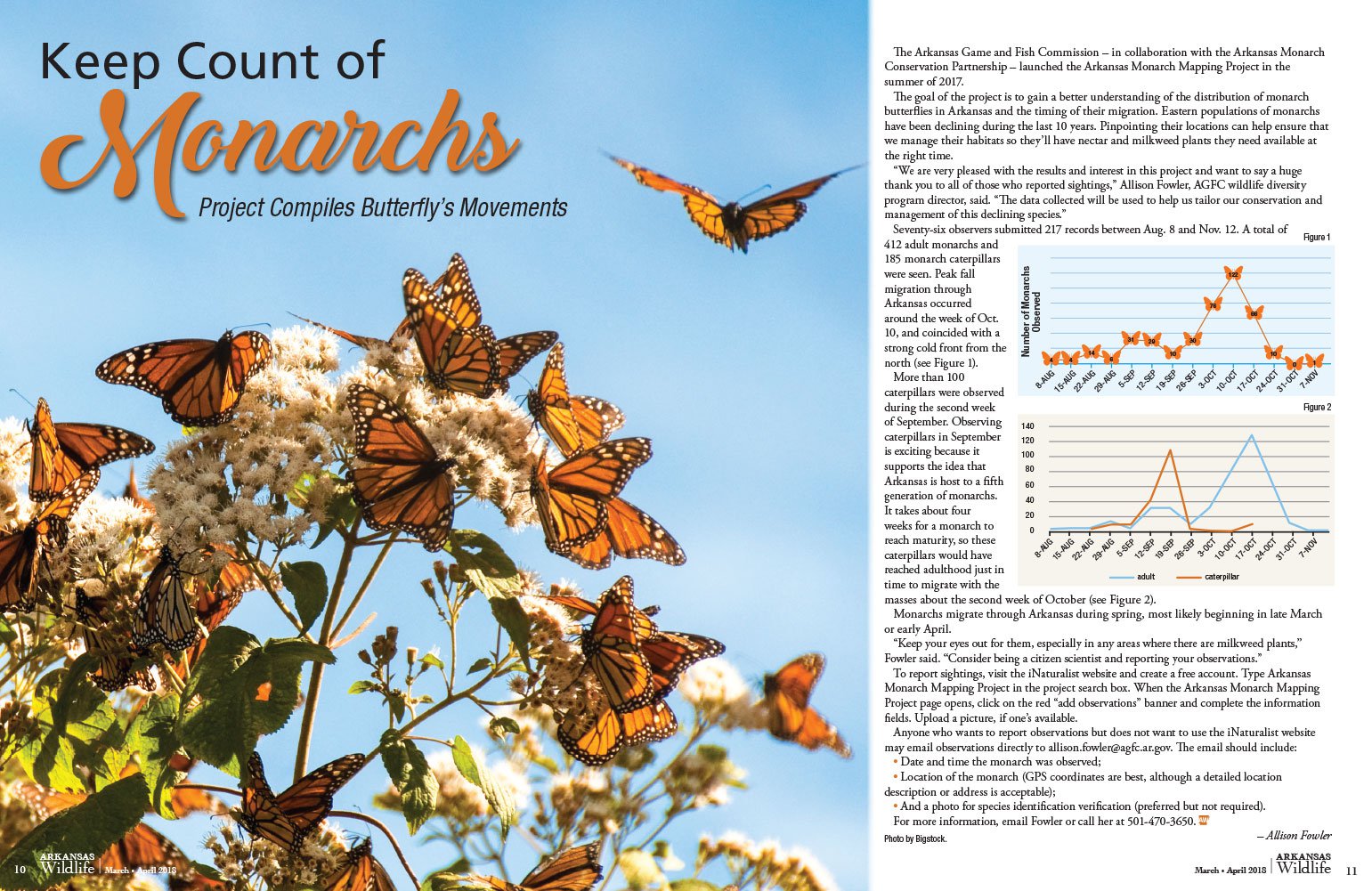Monarch and Pollinator Conservation

Monarchs migrate through Arkansas during spring, most likely beginning in late March or early April, and in fall during mid-October.
Native Gardening for Pollinators
Native plants provide habitat Gardening with native plants provides habitat for pollinators, including butterflies, moths, bees, birds, flies and beetles.
Native plants require less maintenance After they are established, native plants require less maintenance, which saves time and money.
Resources
Keep Count of Monarchs
Compile Butterfly Movements This project seeks to gain a better understanding of the distribution of monarch butterflies in Arkansas and the timing of their migration. Eastern populations of monarchs have been declining during the last 10 years. Pinpointing their locations can help ensure that we manage their habitats so they’ll have nectar and milkweed plants they need available at the right time.
To report sightings, visit the iNaturalist website and create a free account. Anyone who wants to report observations but does not want to use the iNaturalist website may email observations directly to nicholas.goforth@agfc.ar.gov with date and time the monarch was observed; location of the monarch; and a photo for identification verification.
Monarch Mapping
Understanding Migration Patterns
The AGFC is seeking the public’s assistance with a new citizen science project to help answer the question, “Where and when do people see monarch butterflies in Arkansas?” This will allow biologists to tailor conservation and management strategies for this species, which has seen significant population declines in the past several years.


